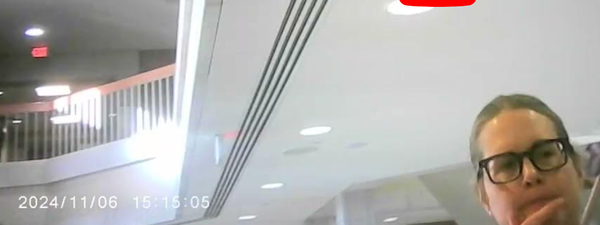A Future Voting Process Where the End Results are Provable as Per the Votes Cast Which Represent the Will of the People
Problems in our current broken election system and how to fix it
"Not since the Manhattan Project, which developed the Atom Bomb, have so many smart people worked together to solve such a critical problem." – in this letter by Jeffrey O'Donnell, one of the authors of the Mesa County Colorado Voting Systems Report #3 on Election Database and Process Analysis of Dominion Voting Systems (DVS) Election Management System (EMS)
In the early 1900s it took Bertrand Russell over 300 pages to prove that 1 + 1 = 2. Thankfully with the work being done around the country since November 3rd, 2020 (and long before), it will not take nearly as long here to unpack the state of our rigged election system and how to fix it.
We the People have lost confidence in our elections process. Already in 2016 and earlier many were questioning election results, a sentiment which has intensified as evidence mounts in all 50 states. We don't trust the machines which slice and dice our votes nor the backdoors into election management systems; we don't like insecure mass mail-in absentee ballots and drop boxes exploited by vote trafficking organizations; we have lost faith in internet-connected poll books and inflated voter rolls obscured from public view.
Here in Minnesota, roadblocks were put in our path when we wanted proper audits of the ballots and the machines or simply have a look at the cast vote record (CVR) reports which are automatically generated once ballots are scanned. These obstructions lit a greater fire under us to discover the truth and share it with anyone who has humble heart and a desire to learn.
The Vision
We are aiming for a future voting process where the end results are provable as per the votes cast representing the will of the people. We can do this. And we will.
The Problem
(S)elections are achieved by the following formula:
- election machines (including e-pollbooks, tabulators, and election management systems)
- mass mail-in ballots
- inflated voter rolls
Let's take these one at a time.
1. The Machines
The software underpinning Dominion, ES&S, and Hart is Smartmatic (see Sequoia), which has not only determined elections in the United States, but also as far afield as Venezuala already in 2004. After your ballot is scanned in to Dominion, ES&S, or Hart tabulators your voice through your vote can be fractionalized or even changed in the backend of the databases storing those data points. Yes, ballot harvesting and ballot stuffing can cancel a real person's vote, but the machines can do so at scale in the 'black box' not even accessible to most election officials in charge of running elections in their counties. The following chart from Expert Witness Russ Ramsland's Presentation at Georgia State House Elections Hearing on December 10th, 2020 provides an overview of our voting system, networks, and attack entry points.

(S)elections have been taking place for quite some time, probably since electronic equipment was introduced at scale in the early 2000s (prior to that, old school methods were used).
It is likely that Democrats and Republicans have been (s)elected to keep the establishment in control while appeasing you and me with the illusion that our side occasionally won. They want us to think that if we didn't win a particular election, that's okay because 'we'll get them next time.' They want us to be divided against our neighbor so we miss the bigger game being played in the shadows. We cannot continue being lured into thinking like this and must admit to ourselves where we allowed ourselves to be led astray or were willfully blind.
Sadly we may never know the details of what happened in 2018 (and before) because under USC 52 Chapter 207 §20701 physical and digital election records need only be maintained for 22 months.
But thankfully they do have to be maintained for 22 months. While we may learn the truth about 2018, by contrast in 2020, despite a massive coverup attempt and aggressive censorship, the details of the coup are coming into the light for all to see.
For example, an analysis of the Mesa County, Colorado Dominion Voting Systems (DVS) Election Management System (EMS) server from the 2020 and 2021 elections proved database manipulation that initially went undetected by the office of the county clerk and recorder, Tina Peters. Only her courageous decision to save images of the server before and after the Dominion "Trusted Build" in Spring 2021 preserved the opportunity for data analysts to investigate by preserving election records in accordance with state and federal law.
Those efforts made it possible for the rest of us to learn information I imagine Dominion never wanted us to know. J. Alex Halderman's report from Antrim, County Michigan is also instructive on Dominion. More recently, the United States Election Assistance Commission Report of Investigation into Dominion Voting Systems D-Suite 5.5-B in Williamson, County, Tennessee found a serious anomaly causing 7 of 18 ICP tabulators used during the election to not match the number of ballots scanned. The same code was found in New Mexico machines.
As Dominion appears to get the lion's share of bad press, other vendors like ES&S or Hart may attempt to distance themselves, but remember ES&S and Hart also use Smartmatic software. Furthermore, Dr. Douglas Frank has said the ES&S DS 200 is among the most hackable ballot scanners in the country, and was used in 66 Minnesota counties during the 2020 election.
2. Mass Absentee Mail-in Ballots
The documentary 2000 Mules is alarming in part because it demonstrates the coordinated operation that is physical ballot trafficking, but also because additional questions arise: Who printed these ballots? With which templates? How were they provided to the mules? How did they cover their digital tracks? On the last question, is it possible that tabulators have internal code to hide ballot dumps and removes excess votes for the popular candidate?
True the Vote's election integrity testimony in Wisconsin on March 24, 2022 and the election integrity report is a great introduction to what some have called the election cartel.
In Minnesota, consent decrees removed witness and signature requirements on absentee ballots opening the floodgates to now legal but ethically questionable ballots. Keep in mind that some quantity of suspicious ballots are more than likely used to 'balance the budget' once polls are closed, since our election results appear to be centrally managed by a PID controller. (Read on to see a potential instance in a Minnesota uncovered in a postelection review where the budget does not seem to have been balanced.)
3. Inflated Voter Rolls
How do we know that voter rolls are inflated, providing an ample supply of ready-to-launch voters?
Voter rolls and histories are public information that you can request from the Minnesota Secretary of State's website for $46. Note that your request is made at a particular moment in time. However, if you request a list before and after an election, as people like Rick Weible did for the November 3rd, 2020 General Election, and you are handy with database management (these are big files) then you can see how the lists changed. If you were to continue to request lists every few weeks, then you could see how the lists change over time, sometimes dramatically. (Going forward, it should not require experts in database management to hold our government accountable.)
It was these voter rolls and histories that allowed Rick Weible to discover that more than 700,000 Minnesota ballots were not yet connected to a voter on November 29, 2020, only 25 days after the election and a mere 5 days after the Minnesota State Canvassing Board certified the results of the 2020 General Election. Should the Board have certified the results if the work required by Minnesota statutes was not yet complete?
On election day, electronic pollbooks connected to the internet provide access to the statewide voter registration system (SVRS) in the cloud. Ask yourself, what benefit might there be to the e-pollbooks being connected to the SVRS in the cloud from the perspective of monitoring or even controlling an election outcome? The current Minnesota Attorney General's tweet at 3:57pm on election day suggests he had some knowledge of votes being cast in real time. Could it be—to name just one possibility—that the system notes which voters do not vote (neither submitting an absentee/mail-in vote nor voting in person in the precinct) and adds those voters to the phantom voter pile?
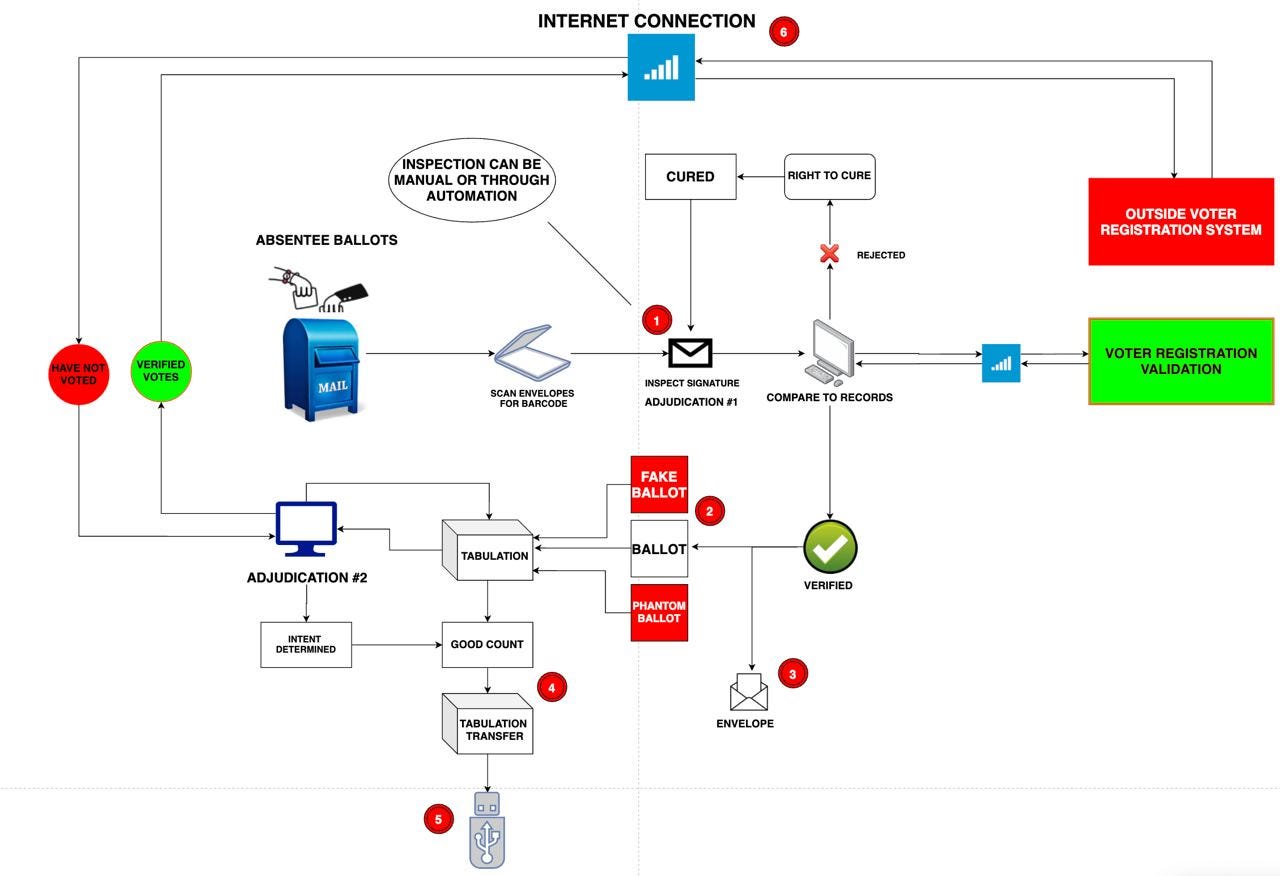
What is the result of election machines, mass mail-in ballots, and inflated voter rolls? The result is that this broken process not only (s)elects the leader of the free world, but also those who run our children's schools. How many times will a school board candidate who is well respected, competent, and very popular, somehow lose her race by a slim margin? Think back to elections you've voted in. Has nothing ever felt off to you?
What Happened in Minnesota?
For the purposes of discussion, consider that in 2020 there were actually two elections, 1) the single-day in-person election at your precinct polling place on November 3, 2020, and 2) the 46-day absentee/mail-in voting election from September 18 to November 2, 2020.
The MN State Canvassing Board reported 1,380,333 votes cast in person—it could be said that only 42% of Minnesotans participated on election day itself. As for the second election, up from 24% in the prior election absentee or mail-in ballots represented 58% (1,906,383 votes) of a record 3,292,997 total votes. Many more Minnesotans participated in this 46-day absentee/mail-in voting election.
Minnesota led the country for the third election in a row with nearly 80% voter turnout (the highest percentage turnout since 1956). Remember that this number includes phantom voters that should not be on voter rolls to begin with. Very high voter turnout (above 60%) is a reliable indicator of potential fraud.
Next, let's take a look at how votes were reported to the media (refer back to Russ Ramsland's slide above for reference). The following graphic shows how the votes were sent through to the media from Edison Research. Notice the negative 194,846 votes near interval 50. In a system that is aggregating votes, should there ever be a drop in nearly 200,000 votes? What may have caused that?

Now compare Minnesota's graph with Pennsylvania's.
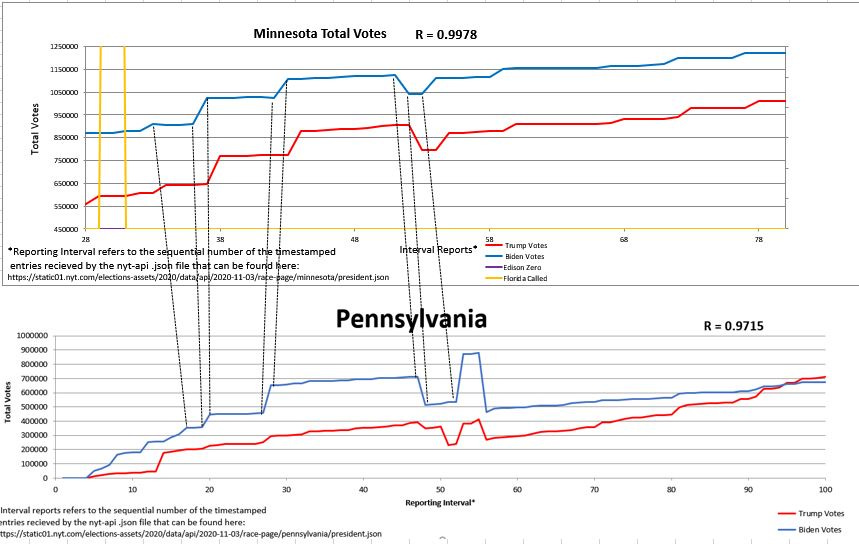
Draza Smith's view is that each state is given a target "set point", so named because the shape of these graphs resembles a controlled industrial system.
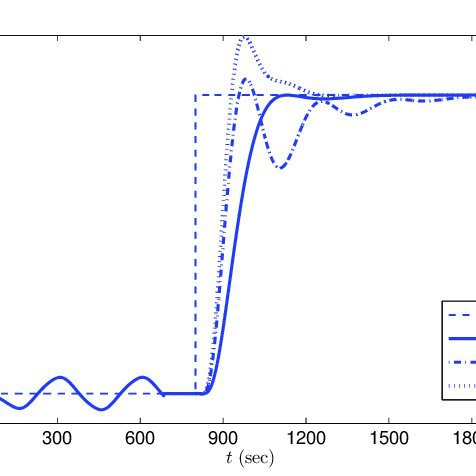
This vote analysis, charting the nyt-api .json file (which eventually gets reported through the media), was done by Draza Smith using data from this Github repository, for other states, like Michigan here.
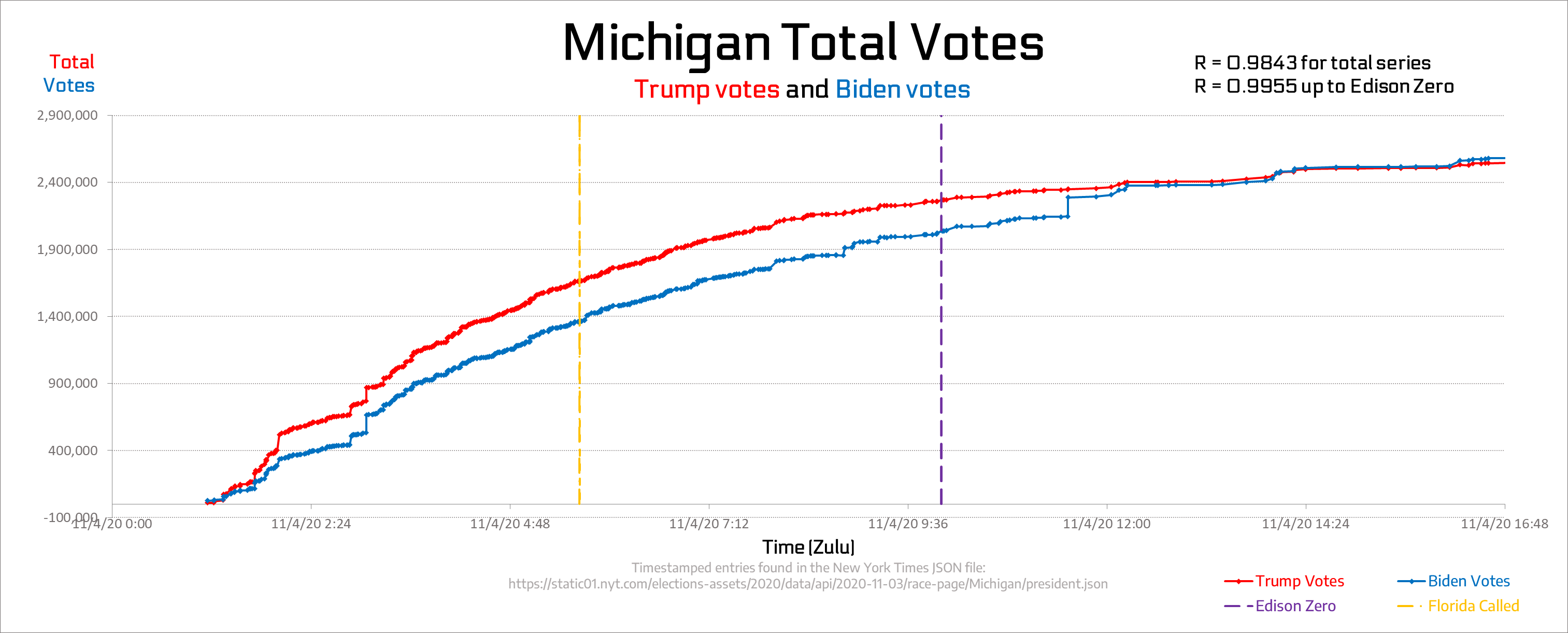
But there were set point changes on election night after Florida with its 29 electoral college votes went for Trump. Why? A presidential candidate needs 270 electoral college votes to win. So, if Florida was meant to go to Biden in the original plan, now that it had gone to Trump the other states' set points would need to be changed in order to achieve an overall Biden win. Those 29 electoral college votes would need to be found elsewhere.
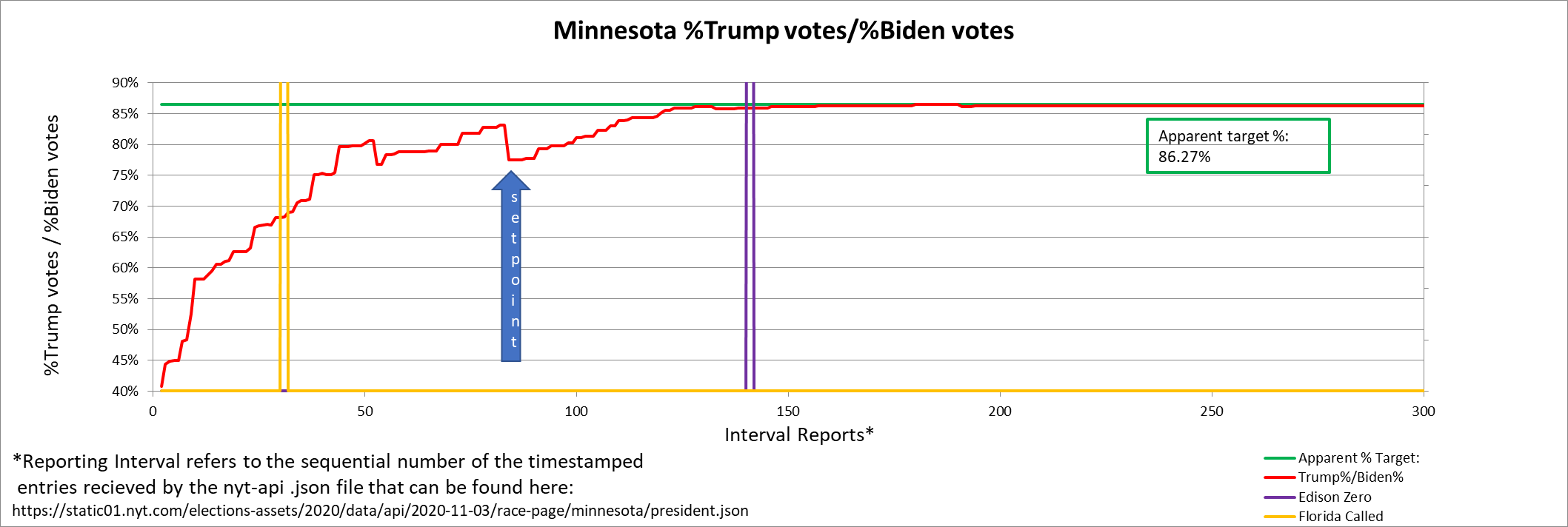
To emphasize the point these illustrations are making: It is likely the entire country's election were managed top-down. When it became clear that a lot of Republican voters were showing up in person on election day, the algorithm had to be reset. Only then could the desired result be achieved. But then, once it had been announced that Biden won, the work was far from over for the election cartel: now they would have to ensure that ballots were delivered across the country where the people were most likely to ask questions. Unfortunately for the cartel, citizens of every state and probably in every county of every state are working hard to decipher exactly what happened. The truth simply cannot be hidden forever so long as enough people remain focused on discovering it.
Another way of approaching the problem is through Seth Keshel's trend analysis from 2008-2020, which accounts for registration changes and population growth. His Minnesota analysis concluded there may have been around 228,000 excess Democrat votes in 2020. Keep in mind, this trend analysis is built up off of very likely manipulated elections in 2008, 2012, and 2016. Apparently, Biden's official (unofficial) vote total in 2020 was 1,717,077 (45.28%) versus Trump's 1,484,065 votes (52.40%). That's a sizeable 7.12% margin, which in my opinion is one of the tactics to get Minnesotans not to even look into whether their elections were free and fair or not while the fake news repeated 'no widespread fraud' and 'not enough fraud to change the election.' Is the media still singing this tune or have their deceptive tactics changed once more?
Based on the data currently available, it looks like Trump carried Minnesota, probably comfortably—that is the magnitude of the impact the combination of machines and mass mail-in ballots and inflated voter roles can have. They can swing actual vote counts by 10% or more if needed. But remember, this isn't only about Biden and Trump. The machines are capable of manipulating votes up and down the ballot, from president to schoolboard director. Is it any wonder then that most school boards aren't working for the benefit of children, but instead doing the opposite?
The Machines in Minnesota
Minnesota uses Dominion, ES&S, and Hart systems, although only 6 of 87 counties have election machines certified by the EAC, which may conflict with Minnesota Statute 206.57 Subd. 6. Required Certification, which reads in part "...a voting system must be certified by an independent testing authority accredited by the Election Assistance Commission..."
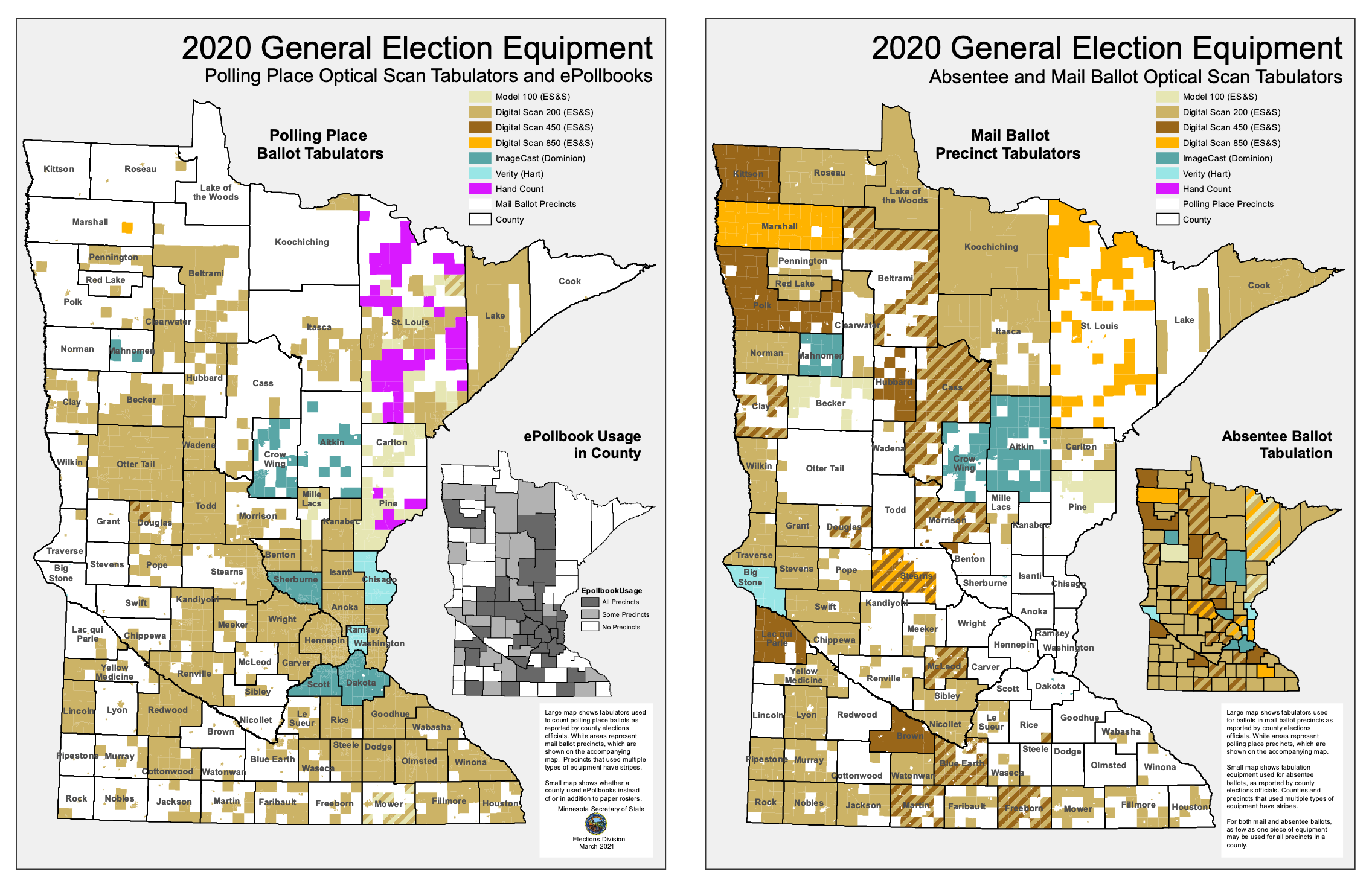
In phone conversations I had with Minnesota election officials in summer 2021 and in more recent discussions that I've observed, so far none have said they've lost faith in the electronic voting equipment. Again, what was shown in the Mesa County Report #3, where an unauthorized creation of new election databases occurred during early voting in October 2020, was that in that case the election officials could not have been responsible for the changes. From this perspective, it's very possible that many election officials are hostages in a bad system. Will any of these election officials, recorders, or clerks come to our aid once they realize the people simply want the truth about election results? After all, isn't it their statutory duty to preserve election materials and records for 22 months after a general election?
Now, supposing you wanted to verify the output of the machine process with the results reported by precints, counties, or the secretary of state's website—how could you do that? One way would be to examine the cast vote record (CVR) reports, which are automatically generated by the tabulators as ballots are scanned in. However, to date, despite the clarity of CHAPTER 13, GOVERMENT DATA PRACTICES, no CVRs have been shared with any Minnesotan requesting them, although one county attorney has said in writing that they do not have them, which either shows 1) a lack of understanding of how the machines work, 2) a lack of understanding of election record retention laws, or 3) potentially an understanding that if shared the CVR provides the public a way to check the accuracy of reported election results.
You could also do a full and complete audit of ballots, tabulators, and election management systems for a county or even for a precinct. A partial audit was done in Maricopa County, Arizona and men and women in Otero County, New Mexico are currently conducting an audit of their county's 2020 General Election. Kansas may have an audit soon as well.
Part of the Maricopa County audit scope of work which was not completed by the official audit was the door-to-door canvassing. This is a method to compare the voter rolls and histories with the responses given by those men and women themselves. It is eye-opening when the voter histories shows a person did not vote but they claim they did. This approach also is effective in confirming phantom voters in the voter rolls. In Minnesota, the results of this method (using sites like https://canvassmn.com were brought to the Crow Wing County commissioners board meeting and was influential in persuading them to pass a resolution in favor of asking the Minnesota Secretary of State to help them to unseal their ballots and conduct an audit. (The request was declined.)
Postelection reviews reveal missing ballots
Minnesota Statute 206.89 POSTELECTION REVIEW OF VOTING SYSTEMS hand counts ballots returned by the optical scan ballot counters in select precincts, known as a postelection review. (These are sometimes referred to as risk-limiting audits.)
In a postelection review in Dakota County's Precinct 4950, WEST ST PAUL W-2 P-2, the total unadjusted difference was 870 votes. 7 of those 870 votes were explained, but 863 were not explained. Why then does the total adjusted difference (the last column) show all zeros? The total adjusted difference should read 863 (870 minus 7). Even with 65% (863 out of 1327) of the total votes in this postelection review left unexplained, the Final Results row says this is a "Difference of not more than 0.5%" and the Total Adjusted Difference is "0%", deemed "ACCEPTABLE".
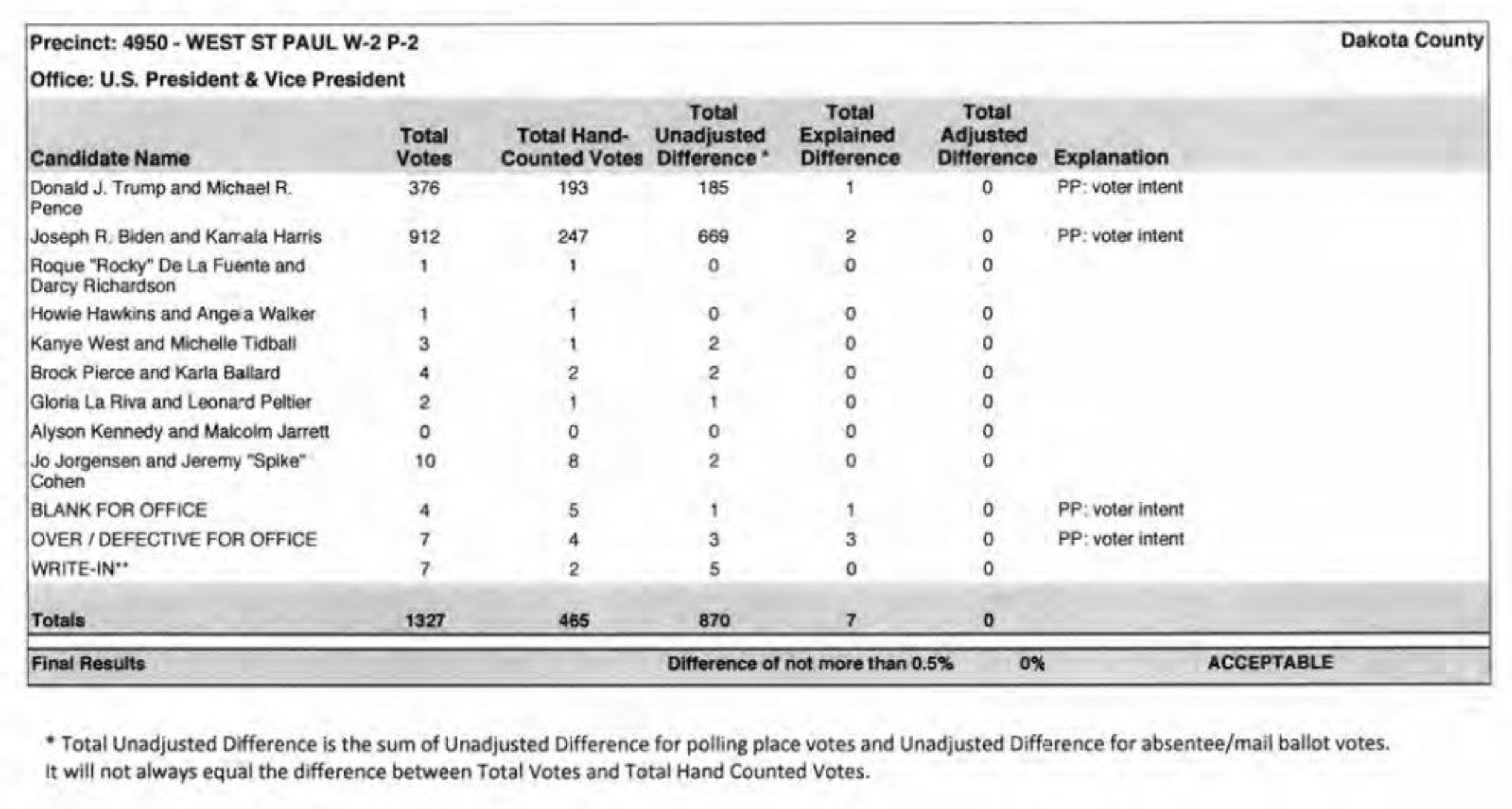
Of course, this is clearly not acceptable and it begs the question: How many more precincts would turn up red flags like this if more postelection reviews had been done? And how many more red flags might be raised if proper audits were done? With this work being shown to Minnesotans, it would be strange if they were not asking for audits and accountability.
A petition to stop the certification of Minnesota's Election
Based on the postelection review above (but not only that) it was correct for Susan Shogren Smith to properly serve a petition to each member of the Minnesota State Canvassing Board prior to its certification of the 2020 election, in part reading: "Minnesota candidates for office and voters have come forward with affadavits detailing concerns and observations about the ignored and failed election processes in counties across the state...If this Court does not take action to prevent the certification of the Minnesota election until a complete, bi-partisan statewide audit of the election occurs, including election materials, our election system, and the trust of the voters, will be irreparably harmed."
The MN State Canvassing Board is the sole entity identified in the MN Constitution carrying the duty to canvass the statewide election results. However, the MN Supreme Court erroneously ruled (in my opinion) that all 87 counties had to be served. Therefore the case was dismissed without a hearing on the facts on Friday afternoon, December 4, 2020. This dismissal was critical to meeting the the safe harbor deadline of December 8, 2020.
Since that time, every point made in the petition has been confirmed by the work of Rick Weible and others, including "issues related to procedure, observer and election judge access, voter intimidation, lost ballots, lost absentee envelopes, missing election materials and questionable ballots... [and] concerns about voting equipment transmitting results during the early counting period on election day."
With a lack of transparency and demonstrated gaps in the election process across the country and in Minnesota, many have asked, Where are the consequences? We could shrug our shoulders and say, What can we really do? We could sit back and see if the situation improves on its own. We could even give up.
Or we can decide to put the truth on the table, brick by brick, so that before long every Minnesotan knows the truth—all except those that choose the temporary comforts of willful ignorance. Once enough people see what's wrong, available remedies will be welcomed.
Available Remedies
Speaking of remedies... In other states like Nevada, county commissioners are already making decisions to remove electronic voting equipment from upcoming elections and making plans to return to counterfeit-proof paper ballots hand-counted in precinct on a single election day, greatly simplifying the process. Minnesotans have attended their county commissioner meetings and have spoken toward those same ends—that trend is likely to continue.
Counties that move to a machine-free alternative will gain confidence in the election process and results and set a positive example for counties that follow. Meanwhile, our legislators can at any time draft election legislation to remove electronic voting equipment. Or maybe a lawsuit similar to the one filed in Arizona on April 22, 2022—which seeks to ban ballot-counting machines—could succeed in Minnesota.




